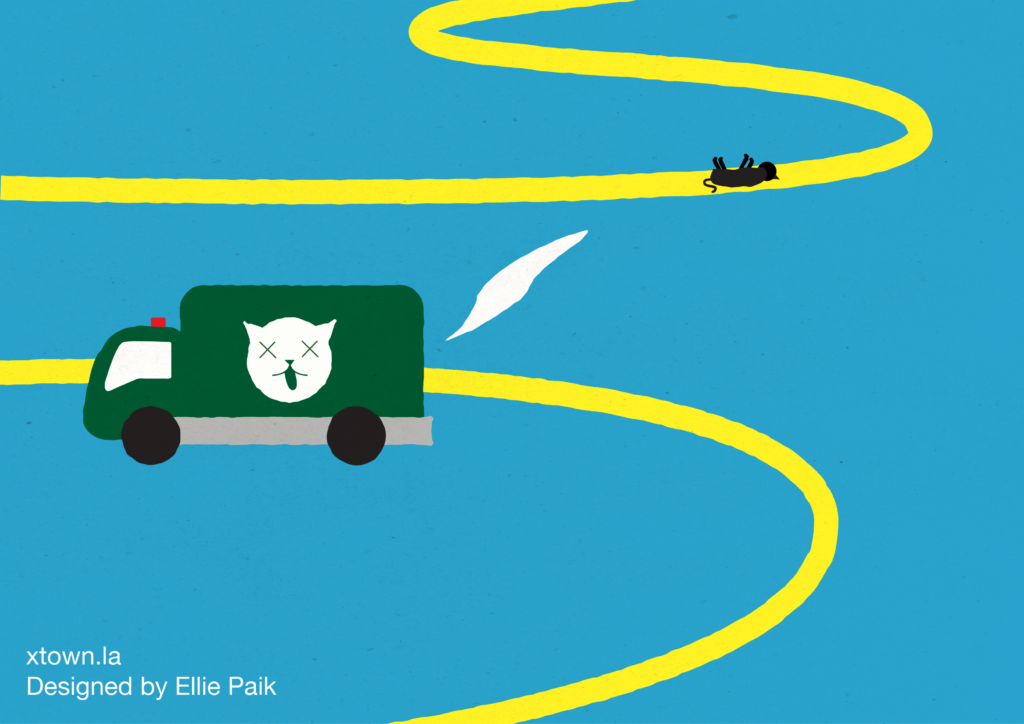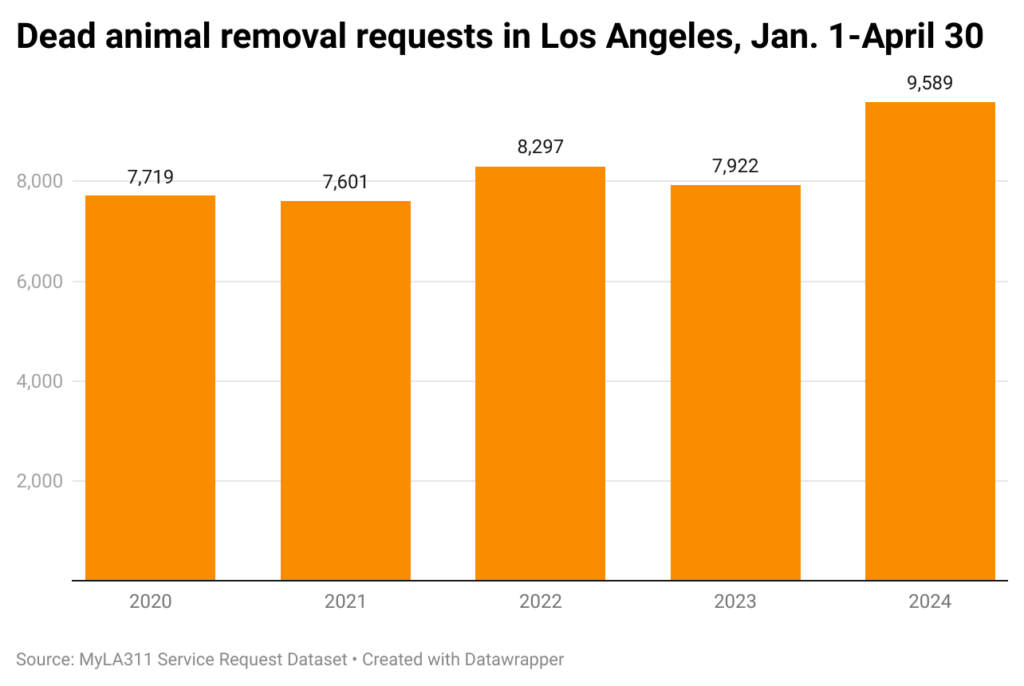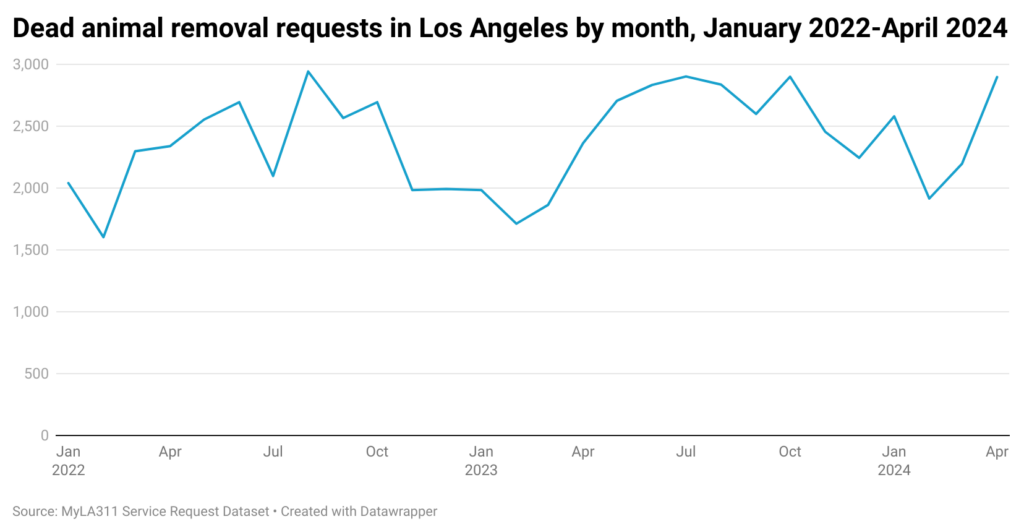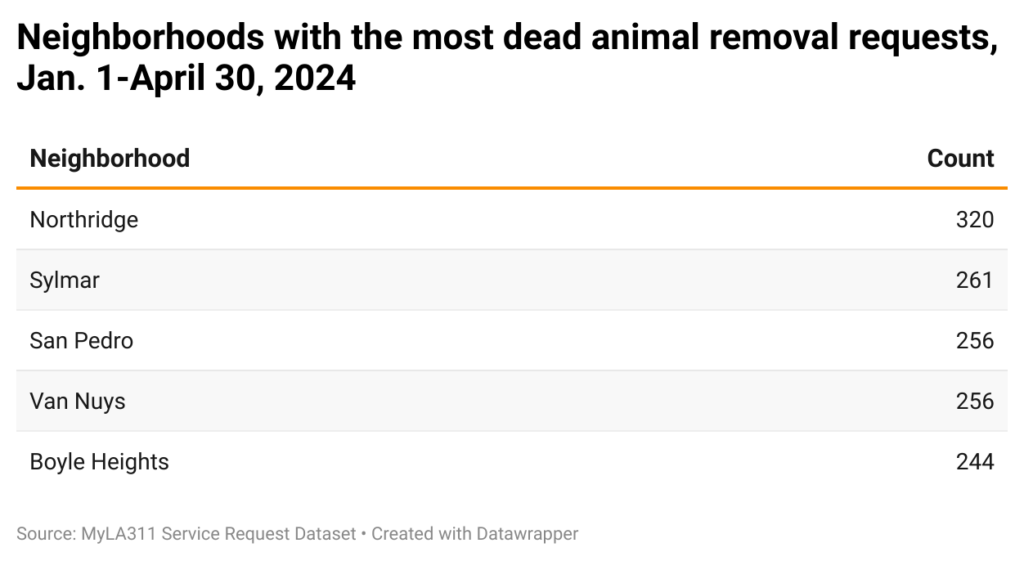Dead animal removal requests spike in early 2024

The spring and summer months mean warm weather and sunny skies in Los Angeles. They also typically bring something else: a spike in dead animal removal requests.
There are early indicators that 2024 could be particularly dangerous for Los Angeles’ furry residents. That’s because calls in the first four months of the year are up 21% over the same period in 2023.
From Jan. 1–April 30, 9,589 dead animal removal requests were placed to the city’s MyLA311 service by phone, website or app, according to publicly available data. The count in the same time frame in 2023 was 7,922 calls.

The rise is an offshoot of the period referred to as “kitten season” in animal care circles. From April through October, many feral dogs, cats, rabbits, possums and other animals mate and produce litters. While there are efforts to rescue and adopt out the young, many remain in the wild. Some are targeted by predators higher up the food chain. Others are vulnerable to speeding vehicles.
No-cost service
When a call comes in, the L.A. Sanitation department provides no-cost, year-round removal of dead animals, except for cows and horses. Some people ask for the pick-up of pets that have passed on. Other requests are for animals found outside that may have been struck by a car, or that died from exposure.
[Get crime, housing and other stats about where you live with the Crosstown Neighborhood Newsletter]
Historically, calls begin to rise in April. But this year, the increase is pronounced. The 2,897 requests represent a jump of over 500 calls from last April. It is also more than every month in the entirety of 2023, except for the 2,902 reports in July.

Following a familiar trend, in the first four months of this year crews answered the most calls in neighborhoods in the San Fernando Valley, where there is more space between homes, and wide roads that can prove deadly to young animals. Northridge saw 320 requests from Jan. 1–April 30, more than any other part of the city. The second-highest count was the 261 calls in Sylmar.

It is unclear why numbers are so high this year. One possibility is that slowly rising counts in recent years produced a natural spike—more kittens and puppies born into the wild in one season can mean large litters in later years.
Ashley Byrne, director of outreach communications for People for the Ethical Treatment of Animals, believes overwhelmed Los Angeles Animal Services shelters that turn away drop-offs are also contributing to the rise in dead animals. Adequately addressing the issue, Byrne said, will require shelters accepting every animal brought to them, and strictly enforcing the city’s mandatory spay and neuter law.
“The only way to solve this crisis and the only way that we will stop seeing animals get killed in the street is by becoming a no-birth city,” Byrne said.
Despite multiple requests, Los Angeles Animal Services did not comment on the suggestion that animals are turned away. The department’s website on Thursday declared that its dog occupancy is at 215% of capacity, with a population of 1,587 canines, far exceeding the 737-dog capacity.
In the effort to get more people to adopt animals, and free up shelter space, the City Council last month passed a temporary moratorium on issuing dog breeding licenses whenever city shelters reach 75% capacity for three straight months. Byrne called the move a “great first step.”
Councilmember Eunisses Hernandez, who introduced the motion, told CBS News in April that not enough animals are getting adopted or fostered, making it difficult for shelters to manage the climbing drop-off of animals after the COVID pandemic.
Correction: This version of the story has been updated to reflect Ashley Byrne’s statement that the city shelter system needs to accept every animal brought to them. It had previously errantly stated that addressing the issues will require expanding shelter capacity.
How we did it: We examined publicly available MyLA311 service data from Jan. 1, 2017–April 30, 2024. For neighborhood boundaries, we rely on the borders defined by the Los Angeles Times. Learn more about our data here.
Want to know how your neighborhood fares? Or simply just interested in our data? Email us at askus@xtown.la.






